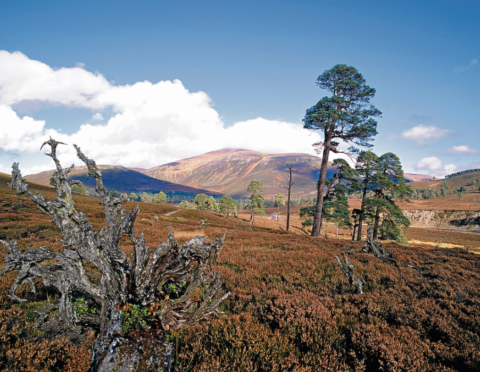Given the weather we’ve had throughout March, you’d be forgiven for thinking winter was here to stay for the long haul.
Between the “best from the east” and the “mini beast” which followed, it’s difficult to think about the seasons changing beneath a deluge of ice and snow. But, for some parts of the country, a bitterly cold March is nothing out of the ordinary.
One of those places is Mar Lodge Estate, owned and managed by the National Trust for Scotland and situated just west of Braemar – a village which holds the record for the coldest-ever temperature recorded on Britain, -27.2°C; not once, but twice.
The estate sits at the heart of Cairngorms National Park and consists of more than 70,000 acres of wildland, equivalent to an area the size of Greater Glasgow.
Paul Bolton, head ranger at Mar Lodge Estate, said: “Spring tends to come a bit later in the year for us – normally, around April. But we quite often still get some frost into May and we’ve even had some as late as August.
“It marks a very different time for us: while the winter months are quieter, during April we begin welcoming our 100,000 annual guests, start to look at our events calendar, and get ready for guided tours and hill walks.”
While the beasts from the east may have passed by, heralding the end of winter for the rest of the country, signs of other creatures mark the welcome return of a new season at Mar Lodge.
More than 5,000 different species have been recorded at the estate, including Britain’s largest land animal red deer, pine marten, red squirrels, otters and water voles.
Anyone visiting should also take a look to the skies as the estate is a safe haven for all sorts of birds of prey, from golden eagles to merlin. In fact, more than 140 species of bird have been recorded at Mar Lodge, with dotterel, ptarmigan and snow bunting finding refuge among the estate’s mountains.
“The birds are a good indication that spring has finally arrived,” said Shaila Rao, an ecologist at the National Trust for Scotland based on the estate.
“We know the seasons are beginning to shift when the early breeders – such as eagles, crossbills, and ravens – start to lay their eggs. That tends to be around March, when the weather is still quite horrible. Then the wading birds, like lapwings, oyster catchers, and sandpipers return from the coast and overseas, wood cock start roding, hares start boxing, and black grouse begin lekking.
“But it’s not just about the animals – flowers begin to bloom, with wood anemone among the first and most prominent to emerge, followed swiftly by wood sorrel. We have more than 600 species of flowering plants, from high altitude, subarctic flowers like mountain azalea to the rare pinewood specialist twinflower, along with eight species of orchid.”
On the subterranean front, Mar Lodge is also home to an array of invertebrates, like the rare narrow-headed wood ant, which is found at only five other sites in the UK. The pearl-bordered fritillary, one the scarcest and most beautiful of the UK’s butterfly species, can be found in some of the estate’s glens.
Its biodiversity meant that last year Mar Lodge Estate became Britain’s largest National Nature Reserve. More than 80% of the estate has been designated as a Site of Special Scientific Interest, Special Area of Conservation, or Special Protection Area.
“This is one of Scotland’s great areas of wildland – there’s a huge amount to appreciate and a lot of work goes into managing the estate,” said Paul Bolton. “Spring may take some time to get to Mar Lodge, but when it does arrive, it’s clear for all to see.”
Mar Lodge Estate is free to enter year-round and is open all hours. The National Trust for Scotland is also running free events to see black grouse lekking on April 21, 26, and 28.
For more information visit: www.nts.org.uk/visit/places/mar-lodge-estate
